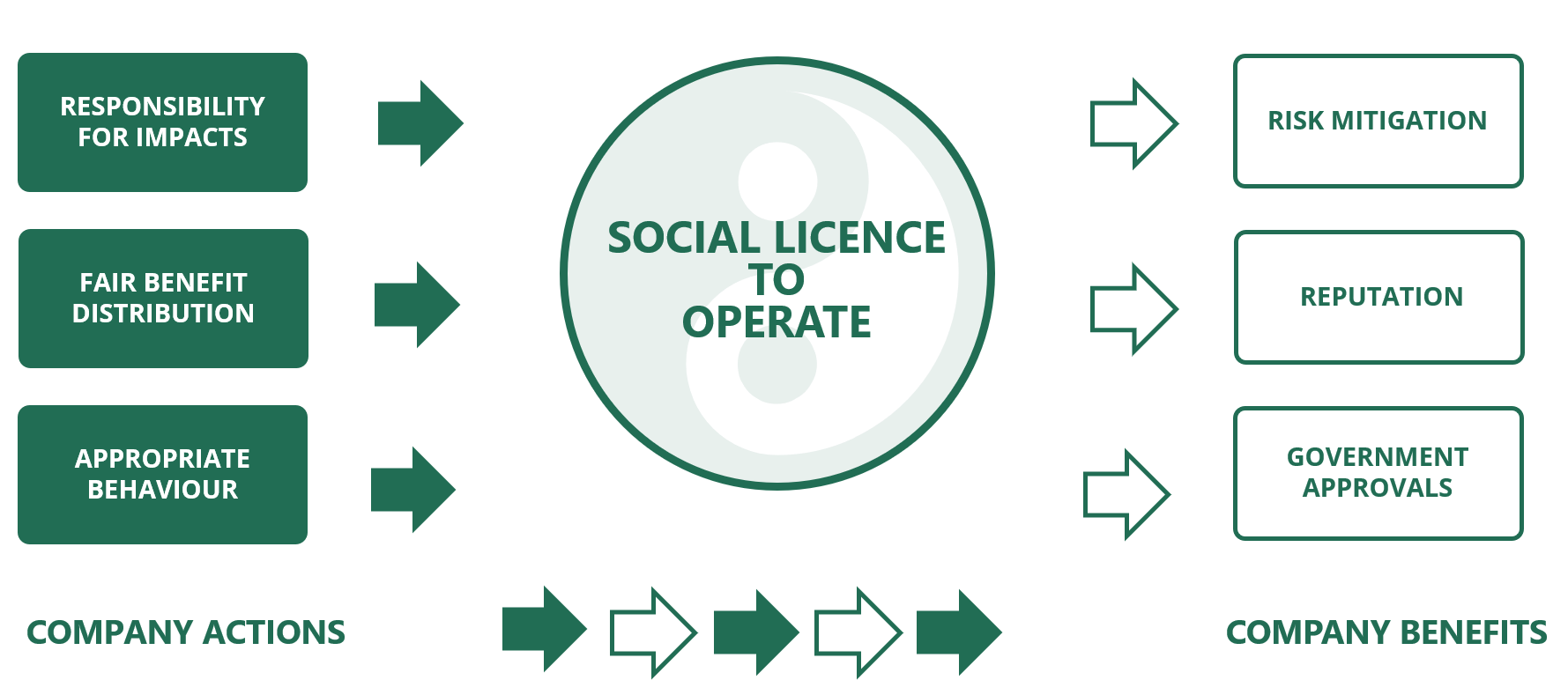Mining and Social Licence
Insights | 15 March 2023

The Origins of Social Licence to Operate
Social Licence to Operate is a mining industry concept. The expression was first used by Canadian Jim Cooney in 1997. This was a decade after the landmark 1987 Brundtland Report and a few years after the concept of the triple-bottom-line was first described by John Elkington. Its use has now spread well beyond the mining industry and as has happened with triple-bottom-line and sustainable development, the term "social licence" has been interpreted and used in many ways. Licence to Operate is currently seen by many as one of the biggest risks to the mining and metals industry, just as it was back in the 1990’s when Jim Cooney coined the term.
The Meaning of Social Licence to Operate.
Social Licence to Operate (SLO) has come to be understood to be an unwritten social contract between a company and a community. Being unwritten implies that a social licence is built on trust.
- To have a social licence means that your company is accepted by local communities, and you are allowed to go about your business.
- The strength of your social licence will vary between stakeholders and over time, ranging from passive acceptance through to broad-based trust.
- A social licence makes it is possible for your company to maintain access to land, to secure government approvals, to build your reputation as a responsible business and to manage your social risk.
- Social licence is a complement to the regulatory licence issued by government and increasingly carries weight equal to or greater than the regulatory licence.
Earning and Maintaining your Social Licence to Operate
Unlike a formal permit with its documented compliance points and periodic review and renewal process, the unwritten nature of a social licence means that it is constantly evolving and requires ongoing (often on-demand) renewal and maintenance. This in turn requires ongoing attention to and monitoring of your relationship with your local communities.
Earning and maintaining a social licence is as much about looking inside as it is looking outside, with company actions - what you do, or do not do - directly affecting the strength or weakness of your social licence. You may be tempted to look outside for the reasons for your "problems" with your local communities but if you are serious about improving the quality of your relationships you would be better served to look inside - at your own policies and practices.
A Management Framework for Social Licence
Earning and maintaining a social licence can benefit from the application of a simple cause-and-effect model whereby three simple actions of the company directly influence the quality of the social licence and the quality of the social leads directly to easily three identifiable benefits to the company. B follows A. Not hard to remember.

Action #1: Taking Accountability for Company Impacts
Typically for a mining project the impacts on local communities include changes to land-use, environment, community health and safety, culture and heritage and in-migration.
Action #2: Fair Distribution of Benefits
Distribution of benefits is about local jobs, local business opportunities, local development and the contribution your company makes to national and local revenue through the payment of royalties and taxes.
Action #3: Company Behaviour
Company behaviour relates to how you, your employees and your contractors conduct themselves, the way in which the company engages with local communities and the way in which the company addresses the inevitable complaints that will arise from your activities.
Benefit #1 - Government Approvals
Governments are becoming more rigorous in their approach to permitting new mines and the use of revenues generated by mining companies. They are being more thorough in their understanding of the social and environmental impacts of mining and mineral processing. They have higher expectations that companies mitigate these impacts and invest in their host communities.
Being in a position to demonstrate a commitment to doing so can deliver tangible benefits across the project life-cycle through preferential access to investment opportunities, quicker development approvals for new projects, less onerous compliance monitoring and reporting requirements, less oversight of operations and easier negotiation of investment conventions
Benefit #2 - Company Reputation
How your performance is perceived (your reputation) can have wide ranging impacts. It influences your ability to attract investors and partners, to access lender funds and to attract staff. It will shape your relationship with government and community. It will also affect the nature of media attention and the level of attention from and attitude of civil society, community and environmental advocates and the general public.
Benefit #3 - Reducing Social Risk
The term social risk covers the range of threats and opportunities that may result from how your company interacts with and impacts on local communities and other stakeholders.
On the one hand a social risk to the community occurs when action by your company has the potential to cause harm or injury to groups or individuals. On the other hand, a social risk to your company occurs when an individual, group, community or organization takes up a social issue and applies pressure to your company with the aim of bringing about change in your policies or practices.Viewed in this way, the rationale for managing social risk becomes quite simple:
Social risk to a company arises when negative impacts on the community that are a result of company actions (or inaction) are addressed badly or not addressed at all. It is therefore in your own self-interest to minimize negative community impacts and to manage them well when they are unavoidable. It would seem to be common sense for you to adopt policies and practices that avoid, minimize and mitigate negative impacts and to create, maximize and enhance the social and economic benefits that flow from your business activities.
Take another minute to check out the video.
Post a Comment